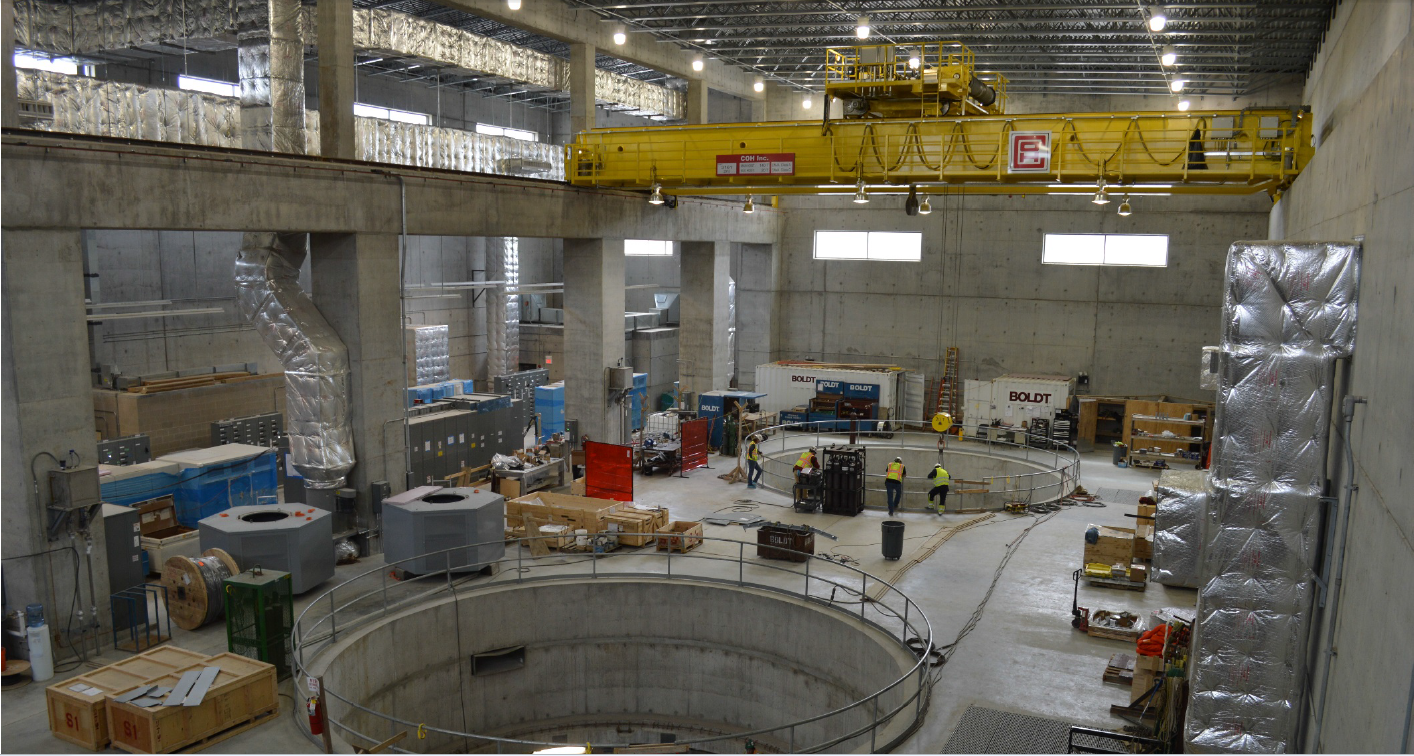U.S. Dam Conversions to Add 330 MegaWatts Electric Generating Capacity
Pueblo Dam on the Arkansas River near Pueblo, Colorado. Photo from Lake Pueblo State Park facebook page.
Construction projects will add hydroelectric generators to “non-powered” dams
7.5 megaWatts connected at Pueblo, Colorado - May 2019
36.4 megaWatts under construction near Pella, Iowa
Hydroelectric power generation commenced this summer at dam which stores water in one of Colorado’s most popular state parks.
The Southeastern Colorado Water Conservancy District (SECWCD) completed construction and testing of the James W. Broderick Hydroelectric Power Facility at Pueblo Dam on the Arkansas River. Commercial operations began on May 28, 2019.
“The 7.5-megawatt plant will generate 28 million kilowatt-hours of electricity annually, roughly enough to power 2,500 homes,” states SECWCD’s May 31, 2019 news release. “Three turbines and two generators within the plant can be used individually or in tandem to take advantage of releases from Pueblo Dam ranging from 35-810 cubic feet per second.”
The annual electricity production to supply 2,500 typical homes equals 933 kilowattHours per month per home.
Pueblo Dam is a U.S. Bureau of Reclamation project, constructed 1970-1975. The dam height is 259 feet, width at base 147 feet, width at crest (top) 30 feet, length 10,230 feet at the crest. Lake Pueblo surface area is 4,646 acres. Lake Pueblo State Park’s number of annual visitors is about 1.7 million.
Pueblo Dam and Lake Pueblo. US Bureau of Reclamation photo.
SECWCD signed a Lease of Power Privilege (LoPP) with the U.S. Bureau of Reclamation in August of 2017, and began construction shortly afterward.
The City of Fountain and Colorado Springs Utilities (for use at Fort Carson) will purchase the power generated at Pueblo Dam. After 10 years, Fountain will purchase all of the power generated by the plant for the following 20 years.
Cost of the project was $20.2 million. SECWCD revenues from electric power sales to the utilities is expected to average about $1,500,000 per year, according to a May 31, 2019 news release.
SECWCD’s Project Schedule lists preparation and construction tasks required to complete the Pueblo Dam Conversion:
Pueblo Dam Hydroelectric Conversion Project Schedule
1) Feasibility Study Updated: March 2014
2) Preliminary Design Complete: July 2014
3) Execution of Final LoPP: April 2017
4) Preliminary LoPP Granted: February 2012
5) Final Design Complete: June 2016
6) Construction Contract Award: August 2017
7) Construction Complete: December 2018
8) Commissioning: Early 2019
More U.S. Non-Powered Dams Scheduled For Hydroelectric Retrofit
**Hydroelectric NPD Conversions
Planned Capacity Increases
Top U.S. States**
Pennsylvania..121.3 MW
12% increase
Louisiana......48.6 MW
20% increase
Iowa...........36.4 MW
22% increase
Mississippi will add its first hydroelectric capacity with the conversion of four dams in the state’s northwest totaling 35 MW.
In a May 21, 2019 report, the U.S. Energy Information Administration described similar dam conversion construction projects planned in the next few years:
"According to U.S. Energy Information Administration's most recent electric generator inventory, 32 dams that currently do not generate electricity are planned to be converted to hydroelectric dams, which will add more than 330 megawatts (MW) of electric generating capacity to the grid over the next several years."
The EIA report lists the U.S. states which will gain the most hydroelectric generating capacity:
Megawatts planned for non-powered dam hydroelectric conversions in U.S. states


Existing U.S. hydroelectric generating capacity by region, and non-powered dam opportunities


Iowa’s Largest Lake is Site of It’s Newest Hydroelectric Station
Lake Red Rock is a reservoir on the Des Moines River, created by the U.S. Army Corp of Engineer’s Red Rock Dam, built in 1969, three miles southwest of Pella.
Red Rock Dam length is 5,676 feet; height is 110 feet.
Construction of the Red Rock Hydroelectric Project began in August 2014. Completion is expected in 2020.
The powerhouse will contain two turbine-generators. Licensed generating capacity is 36.4-MW for normal river flows, and up to 55 MW for high flows such as spring snowmelt or heavy rains upstream in the Des Moines River drainage.
Red Rock Hydro will rank as the largest hydroelectric generating capacity on an interior Iowa River.
Missouri River Energy Services (MRES) is the Red Rock Hydroelectric Project constructor and operator. Consumer-owned municipal electric utilities in 61 communities across Iowa, Minnesota, North Dakota, and South Dakota purchase wholesale electric power from MRES. The present MRES power supply portfolio consists of:
Missouri River hydroelectric energy from Western Area Power Administration (WAPA).
fossil fuel-fired powerplants: coal, natural gas, fuel oil, and diesel.
wind-powered turbines.
solar photovoltaic.
All but two of MRES member utilities receive about 40 percent of their electricity annual needs from WAPA hydropower.
Western Minnesota Municipal Power Agency will finance and own Red Rock Hydroelectric Project.
Red Rock Hydro’s annual electricity generation estimate is 178,000 megaWatt-hours, enough for 18,000 homes consuming nearly 1,000 kiloWatt-hours per year.
Red Rock Hydroelectric Project photos are reprinted with permission of Missouri River Energy Services.





Sources and More Info:
U.S. Energy Information Administration - Nonpowered Dams Conversions
- - - - -
Pueblo Dam
Southeastern Colorado Water Conservancy District - hydroelectric info
Pueblo Chieftain - June 4, 2019
U.S. Bureau of Reclamation - Pueblo Dam
- - - - -
Red Rock Dam
Red Rock Hydro Project - home page and photo gallery
Missouri River Energy Services - hydroelectric information
Energy News Network - Iowa hydroelectric info
- - - - -
Other U.S. dam info
U.S. Army Corps of Engineers - National Inventory of Dams

